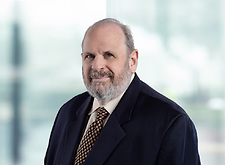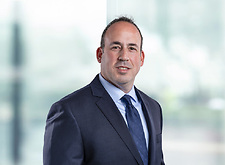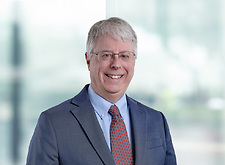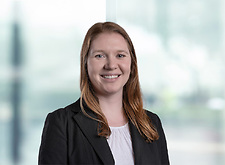If You Build It They Will Plug In: New York Jumpstarts its Electric Vehicle Market with Comprehensive “Make-Ready” Order
On July 16, 2020, the New York Public Service Commission (“Commission”) authorized more than $700 million in funding so the state’s utilities and the New York State Energy Research and Development Authority (“NYSERDA”) can implement a wide range of incentives and measures galvanizing the State’s burgeoning electric vehicle (“EV”) market. With several key modifications, discussed below, the Commission’s Order largely adopted the Department of Public Service Staff’s (“Staff”) proposed Make-Ready Program, which we discussed in depth in our prior alert here.
Highlights include addressing public transportation, a key concern of many comments on the Staff proposal. The Commission directed utilities to establish the Transit Authority Make-Ready Program to work with specific transit authorities in their efforts to achieve 25 percent electrification by 2025. The Commission also directed the utilities to establish a Medium-Duty and Heavy-Duty Make-Ready Pilot Program, and a Fleet Assessment Service.
Looking to spur private investment and innovation, the Order directs NYSERDA to establish an Environmental Justice Community Clean Vehicles Transformation Prize, a Clean Personal Mobility Prize, and a Clean Medium-Duty and Heavy-Duty Innovation Prize to equitably deliver transportation electrification benefits throughout the state.
Industry reaction to the Order was overwhelmingly positive. Matt Stanberry, Managing Director for Advanced Energy Economy (“AEE”) said the Order, “cement[s] New York’s place as a leader in transportation electrification,” and Anne Reynolds of the Alliance for Clean Energy – New York (“ACE-NY”) stated, “The scale of this program is beyond any prior efforts, and it recognizes the need to install vehicle chargers widely around the State. It is a huge step for EVs – and for New Yorkers that are thinking about buying an EV.”
I. New York’s EV Market and Deployment Goal
After making several adjustments to Staff’s model, the Commission determined the following number of plugs in the following utility territories would be eligible for the Make-Ready incentive:
(If the link above is not active you may visit /assets/htmldocuments/July%2028%202020%20-%20Hodgson%20Russ%20Renewable%20Energy%20Client%20Alert_chart%201.pdf for the schedule.)
Both utility-owned equipment (traditional distribution infrastructure such as stepdown transformers, overhead service lines, and the utility meter) and developer-owned equipment (conductors, trenching, and panels needed for the EV charging station) would be eligible for the Make-Ready incentive. The EV charging station itself, power blocks, modules, mounting hardware, and co-located distributed generation or energy storage material would not be eligible for the incentive. Utility-approved contractors would build and install this equipment, and the customer would own it.
The Program thus precludes utility ownership of the charging station hardware and offers a rebate but not utility ownership of the make-ready infrastructure on the customer side of the meter.
To meet these goals, the Commission authorized a budget totaling just over $700 million to cover the various initiatives. Approximately $590 million is allocated towards the Make-Ready Program, $10 million for the Transit Authority Make-Ready Program, and $100 million for environmental justice pilots and innovations prizes.
II. NYPA Eligibility
Over the objections of several industry voices, the New York Public Authority (“NYPA”) is eligible for certain of the Make Ready incentives. Eligibility was limited, however, to two initiatives: (i) to build ten fast charging locations in upstate Regional Economic Development Council regions by 2022; and, (ii) investments to build out a network of Direct Current (“DC”) Fast Chargers across the State, under NYPA’s existing Evolve NY program. Furthermore, NYPA’s eligibility is subject to its eventual divestiture of EV charging stations developed through Program incentives within 10 years.
III. Eligibility Criteria
Instead of the prescriptive maximum incentive levels recommended in the DPS Staff white paper, the Order provides more flexibility, and allows incentives to cover:
- Up to 100 percent of eligible make-ready costs for publicly accessible DC Fast Charger sites within one mile of environmental justice communities in Con Edison’s, Central Hudson, O&R, and RG&E’s service territories, and within two miles of environmental justice communities in NYSEG and National Grid’s service territories;
- Up to 100 percent of eligible make-ready costs for Level 2 sites in multi-unit dwellings within one mile of environmental justice or low- and medium- income communities in Con Edison’s, Central Hudson, O&R, and RG&E’s service territories, and within two miles of environmental justice or low-and moderate- income communities in NYSEG and National Grid’s service territories;
- Up to 90 percent of eligible make-ready costs for sites that meet all of the applicable eligibility requirements; and,
- Up to 50 percent of eligible make-ready costs for sites that do not meet all of the applicable eligibility requirements.
(If the link above is not active you may visit /assets/htmldocuments/July%2028%202020%20-%20Hodgson%20Russ%20Renewable%20Energy%20Client%20Alert.pdf for the schedule.)
IV. Medium and Heavy Duty Vehicles
Recognizing the need to spur electrification of cargo vans, box trucks, sanitation trucks, and other medium- and heavy-duty vehicles, the Commission extended its Fleet Assessment Service to larger vehicle classes and implemented the Medium- and Heavy-Duty Fleet Make-Ready Pilot Program. The program will support a direct reduction of diesel emissions located in environmental justice communities through electrification of the medium-duty/heavy-duty vehicles and trucks.
In order to qualify, participants must also be seeking and receive support through the existing New York Truck Voucher Incentive Program run by NYSERDA or the New York City Clean Trucks Program administered by the NYC Department of Transportation. Such support shows that a fleet owner has replaced an older, heavily polluting diesel truck with a clean vehicle technology that dramatically reduces or eliminates tailpipe pollution. Participants in the pilot program that purchase the vehicle through NYSERDA’s Truck Voucher Incentive Program will receive up to 90 percent of the utility-side make-ready infrastructure upgrade costs.
V. Next Steps
The Make Ready Order, while broad in scope, does not address arguably the biggest barrier to EV Station adoption – retail rate design that can accommodate low usage in the early years of deployment. Demand charges in the Con Edison service territory in particular have been a barrier to increased deployment of EV infrastructure.
The industry will look to further reforms in this area as it gears up to make New York ready for electric transportation.
To learn more about New York State’s electric vehicle market, please contact Noah Shaw (518.736.2924), Dan Spitzer (716.848.1420) or Peter Ross (646.218.7528) in Hodgson Russ’s Renewable Energy Practice.
Featured
- Partner
- Partner
- Partner
- Partner
- Partner
- Partner
- Partner
- Partner
- Senior Associate
- Partner
- Partner
- Co-Chair of the Firm, Partner
- Partner













